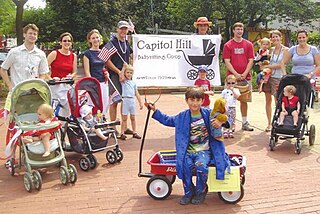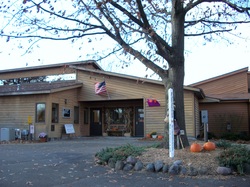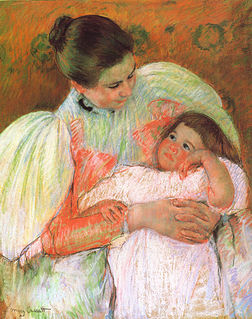 W
WChild care, otherwise known as day care, is the care and supervision of a child or multiple children at a time, whose ages range from two weeks to eighteen years. Child care is a broad topic that covers a wide spectrum of professionals, institutions, contexts, activities, and social and cultural conventions. Early child care is an equally important and often overlooked component of child development.
 W
WAlma House is a heritage-listed former childcare centre, nursing school and offices and now residence located at 114 Belmont Road, Mosman in the Mosman Council local government area of New South Wales, Australia. The property is privately owned. It was added to the New South Wales State Heritage Register on 2 April 1999.
 W
WAnganwadi is a type of rural child care centre in India. They were started by the Indian government in 1975 as part of the Integrated Child Development Services program to combat child hunger and malnutrition. Anganwadi means "courtyard shelter" in Hindi.
 W
WCanadian Foundation for Children, Youth and the Law v Canada (AG), [2004] 1 S.C.R. 76, 2004 SCC 4 - known also as the spanking case - is a leading Charter decision of the Supreme Court of Canada where the Court upheld section 43 of the Criminal Code that allowed for a defence of reasonable use of force by way of correction towards children as not in violation of section 7, section 12 or section 15(1) of the Charter.
 W
WThe Capitol Hill Babysitting Cooperative (CHBC) is a cooperative located in Washington, D.C., whose purpose is to fairly distribute the responsibility of babysitting between its members. The co-op is often used as an allegory for a demand-oriented model of an economy. The allegory illustrates several economic concepts, including the paradox of thrift and the importance of the money supply to an economy's well-being. The allegory has received continuing attention, particularly in the wake of the late-2000s recession.
 W
WChildcare in Francoist Spain and the democratic transition was not about the needs of the mother, but about the needs of the state to educate children. While childcare centers had been provided by Republican aligned unions in the Spanish Civil Wars, with the start of the Franco period women were discouraged from participating in the workforce. Instead, they were expected to tend to their children in the home. The 1942 Ley de Sanidad Infantil y Maternal provided some assistance to working mothers, including maternity leave, economic incentives to breastfeed and infant childcare. By 1955, the Franco government offered educational programming for children aged three to five, but this was focused less on the needs of mothers for childcare and more on the desire to provide children with skills and abilities to succeed in later mandatory schooling. By 1970, children aged two to five were officially considered part of the educational system, even if attendance was not mandatory.
 W
WThe Childcare Payments Act 2014 is an Act of the Parliament of the United Kingdom that received Royal Assent on 17 December 2014, after being introduced on 5 June 2014. The purpose of the Act was to support working families by encouraging parents to take paid employment by offering eligible parents to pay into an online childcare account which will be automatically topped up by the Government, therefore reducing the burden of childcare costs on such families.
 W
WZara Eileen Hore-Ruthven, Countess of Gowrie was the Irish-born wife of the 1st Earl of Gowrie, Governor of South Australia 1928–34, Governor of New South Wales 1935–36 and the longest serving Governor-General of Australia 1936–44. She was renowned for her work in promoting the welfare of children in Australia, and the Lady Gowrie Child Centres were named in her honour.
 W
WEllen Julia Hollond, née Teed (1822–1884) was an English writer and philanthropist.
 W
WInfection in childcare is the spread of infection during childcare, typically because of contact among children in daycare or school. This happens when groups of children meet in a childcare environment, and there any individual with an infectious disease may spread it to the entire group. Commonly spread diseases include influenza-like illness and enteric illnesses, such as diarrhea among babies using diapers. It is uncertain how these diseases spread, but hand washing reduces some risk of transmission and increasing hygiene in other ways also reduces risk of infection.
 W
WThe left-behind children in China, also called "stay-at-home children", are children who remain in rural regions of China while their parents leave to work in urban areas. In many cases, these children are taken care of by their extended families, usually by grandparents or family friends, who remain in the rural regions.
 W
WMidland Montessori School is an American Montessori Society-affiliated nonprofit organization in Midland, Michigan, United States. It is Midland's largest and oldest school that teaches children based on the Montessori philosophy.
 W
WA monthly nurse is a woman who looks after a mother and her baby during the postpartum or postnatal period. The phrase is now largely obsolete, but the job continues under other names and various conditions around the world.
 W
WA nanny is a person who provides child care. Typically, this care is given within the children's family setting. Throughout history, nannies were usually servants in large households and reported directly to the lady of the house. Today, modern nannies, like other domestic workers, may live in or out of the house, depending on their circumstances and those of their employers. There are many employment agencies that specialize in childcare. Nannies in many areas are a sought after member of the workforce. Many nannies become a part of their family's household. Although previously looked at as a lesser-than job, today's demand has made it a popular and valued addition to the lives of the family's household.
 W
WSatellite babies refer to immigrants’ children who are temporarily sent back to their home country by their parents to be reared by extended family. Typically, the satellite babies are born in the host country and sent back as infants, returning to their parents in time to start schooling or when their parents have established financial stability. Research and media articles on satellite babies have predominantly focused on the topic from a Chinese-American context. Satellite babies have become more prevalent in recent decades due to globalisation, prompting researchers and social workers to raise concerns about the psychological impacts of repeated attachment disruptions and acculturation associated with satellite babies.
 W
WThe timeline of young peoples' rights in the United States, including children and youth rights, includes a variety of events ranging from youth activism to mass demonstrations. There is no "golden age" in the American children's rights movement.